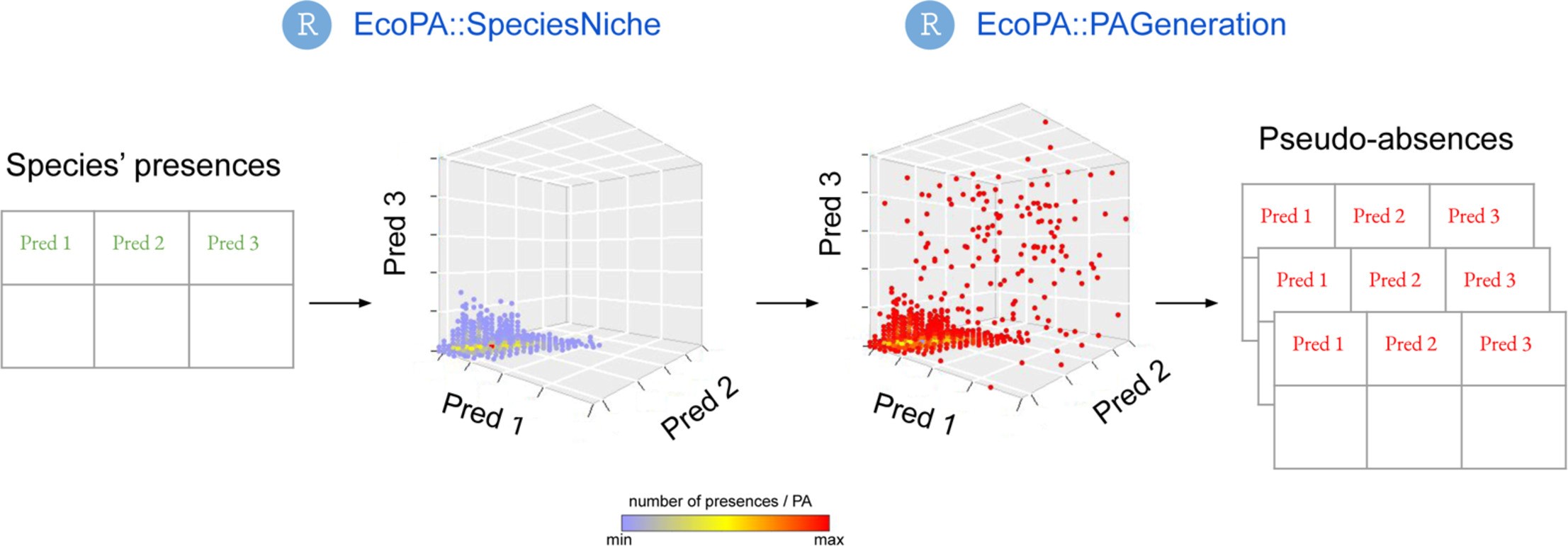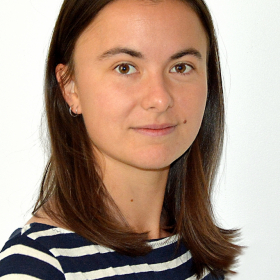Generating pseudo-absences in the ecological space improves the biological relevance of response curves in species distribution models
Generating pseudo-absences in the ecological space improves the biological relevance of response curves in species distribution models
Broussin, J., Mouchet, M., & Goberville, E. (2024). Generating pseudo-absences in the ecological space improves the biological relevance of response curves in species distribution models. Ecological Modelling, 498, 110865.
Species distribution modeling (SDM) is widely used to predict past and future species distributions. However, absence data for species can be scarce or even nonexistent, necessitating the generation of pseudo-absences (PA). Traditionally, PA are generated based on geographic locations where the species is not observed, but this method can introduce biases related to environmental heterogeneity across geographic areas. To address these limitations, recent methods have shifted towards generating PA in ecological space rather than solely in geographic space.
Here, we introduce a methodological framework that strengthens the integration of ecological principles into the generation of PA. Our approach constructs an n-dimensional array, with each dimension representing an environmental predictor, and fills this array based on the density of species presences. By subtracting the presence density from the maximum density, we construct a 'reverse niche' from which PA are generated. We tested and validated our method by successfully reconstructing the response curves of a virtual species, demonstrating the potential of ecologically-based PA to better capture ecological relevance and enhance SDM accuracy. This method is available in an open-access, user-friendly R package, named EcoPA intended to serve as a valuable tool for researchers working with species distribution modeling in ecology, conservation, and related fields.
Here, we introduce a methodological framework that strengthens the integration of ecological principles into the generation of PA. Our approach constructs an n-dimensional array, with each dimension representing an environmental predictor, and fills this array based on the density of species presences. By subtracting the presence density from the maximum density, we construct a 'reverse niche' from which PA are generated. We tested and validated our method by successfully reconstructing the response curves of a virtual species, demonstrating the potential of ecologically-based PA to better capture ecological relevance and enhance SDM accuracy. This method is available in an open-access, user-friendly R package, named EcoPA intended to serve as a valuable tool for researchers working with species distribution modeling in ecology, conservation, and related fields.
- EcoPA package available at https://github.com/JosephineBroussin/EcoPA
- To download EcoPA package from R: devtools::install_github(JosephineBroussin/EcoPA)
- Code used to create the virtual species and generate pseudo-absences using EcoPA is available at https://github.com/JosephineBroussin/EcoPA/Exemple_Virtual_Species
- Le package EcoPA package est disponible à l’adresse suivante : https://github.com/JosephineBroussin/EcoPA
- Pour télécharger le package, depuis R : devtools::install_github(JosephineBroussin/EcoPA)
- Le code permettant de créer l'espèce virtuelle et de générer des pseudo-absences à l'aide d'EcoPA est disponible via : https://github.com/JosephineBroussin/EcoPA/Exemple_Virtual_Species
BOREA contact: Joséphine BROUSSIN, josephine.broussin@mnhn.fr, josephine.broussin@gmail.com


